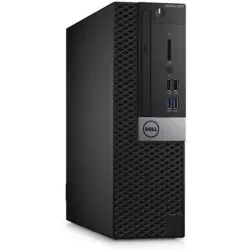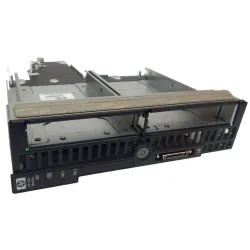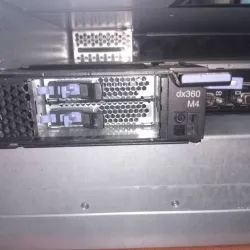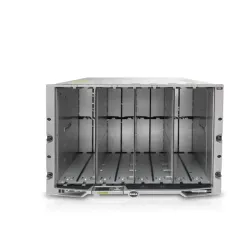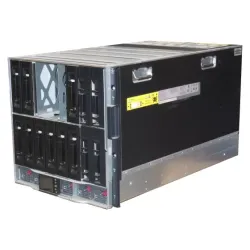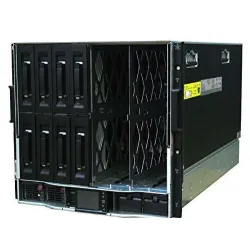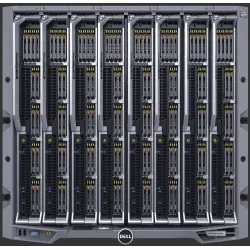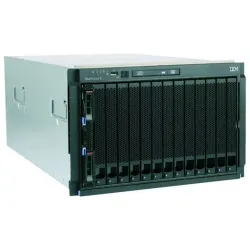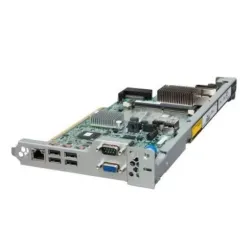Buy the Best Server Chassis for your Needs | Cisco Dell HP IBM
Introduction to Server Chassis
A server chassis is a specialized enclosure that houses one or more computer servers. These enclosures are designed to provide protection, cooling, and easy access to the components of a server. A server chassis can come in different form factors, ranging from small tower-like enclosures to large rack-mounted cabinets.
One of the main purposes of a server chassis is to provide a stable and secure environment for the server components. This is important because servers are often used in mission-critical applications where downtime can be costly. The chassis typically includes features like locking doors and panels, sturdy construction, and cable management systems to keep everything organized and safe.
Cooling is another key consideration when it comes to server chassis design. Servers generate a lot of heat, and without proper cooling, they can overheat and fail. A good server chassis will have multiple fans or other cooling mechanisms built in to keep the components at a safe operating temperature.
Finally, server chassis is designed to make it easy to access and service the components of a server. This can include features like removable drive bays, toolless access to the motherboard and other components, and hot-swappable parts that can be replaced without shutting down the server.
Types of Server Chassis
There are several types of server chassis available in the market. Some of the common types are:
Tower Chassis:
These are vertical enclosures that resemble traditional desktop computers. They are ideal for small to medium-sized businesses or home offices, as they can accommodate a single server or a few servers.
Rackmount Chassis:
These are horizontal enclosures that can be mounted on a rack. They are ideal for large data centers or enterprise-level organizations that require a high-density server deployment. Rackmount chassis can accommodate multiple servers in a single unit.
Blade Chassis:
These are specialized enclosures that can hold multiple blade servers. Blade servers are compact and thin servers that can be easily inserted or removed from the chassis. Blade chassis is ideal for large data centers or cloud computing environments where space is at a premium.
Micro Server Chassis:
These are small form-factor enclosures that are designed to hold small servers. They are ideal for small businesses or home offices that require a low-power, low-cost server solution.
GPU Server Chassis:
These are specialized enclosures that are designed to hold servers with powerful graphics processing units (GPUs). They are ideal for applications that require heavy graphics processing, such as machine learning, AI, and scientific simulations.
In addition to these, there are also specialized server chassis designed for specific industries or applications, such as storage servers, high-performance computing servers, and virtualization servers.
Considerations When Choosing a Server Chassis
When choosing a server chassis, there are several important considerations to keep in mind.
Form Factor:
Consider the size and type of chassis that will best fit your needs. A tower chassis might be a good choice for a small office with a single server, while a rackmount chassis might be more suitable for a larger organization with multiple servers.
Cooling:
Servers generate a lot of heat, so it's important to choose a chassis with effective cooling mechanisms. Look for a chassis with multiple fans or other cooling systems to keep your components at safe operating temperatures.
Expansion:
Consider how many expansion slots and drive bays are available in the chassis. Make sure there's enough room for your current needs, as well as any future expansion plans.
Accessibility:
Choose a chassis that makes it easy to access and service your components. Look for toolless access and hot-swappable components to minimize downtime.
Security:
Servers often store sensitive data, so safety is crucial. Look for a chassis with locking doors and panels to prevent unauthorized access.
Compatibility:
Make sure the chassis is compatible with the hardware you plan to use, including the motherboard, power supply, and other components.
Noise:
Servers can be loud, so consider the noise level of the chassis. Look for a chassis with sound-dampening materials or other noise-reducing features.
These Below brand's server chassis specifications and Features are Cisco, Dell, HP, IBM
Cisco:
Cisco UCS C220 M5 Rack Server: This rackmount server chassis supports up to two Intel Xeon Scalable CPUs, up to 3 TB of memory, and up to 24 SAS/SATA/NVMe drives. It also has dual 10 GbE LAN-on-motherboard (LOM) ports and a PCIe 3.0 x8 slot for additional expansion.
Cisco UCS C480 M5 Rack Server: This is a larger rackmount chassis that supports up to four Intel Xeon Scalable CPUs, up to 6 TB of memory, and up to 32 SAS/SATA/NVMe drives. It also has dual 40 GbE LOM ports and multiple PCIe 3.0 expansion slots.
Dell:
Dell EMC PowerEdge R740 Rack Server: This rackmount server chassis supports up to two Intel Xeon Scalable CPUs, up to 3 TB of memory, and up to 16 SAS/SATA/NVMe drives. It also has dual 10 GbE LOM ports and multiple PCIe expansion slots.
Dell EMC PowerEdge R640 Rack Server: This is a smaller rackmount chassis that supports up to two Intel Xeon Scalable CPUs, up to 3 TB of memory, and up to 10 SAS/SATA/NVMe drives. It also has dual 10 GbE LOM ports and multiple PCIe expansion slots.
HP:
HPE ProLiant DL380 Gen10 Rack Server: This rackmount server chassis supports up to two Intel Xeon Scalable CPUs, up to 3 TB of memory, and up to 30 SAS/SATA/NVMe drives. It also has dual 10 GbE LOM ports and multiple PCIe expansion slots.
HPE ProLiant DL360 Gen10 Rack Server: This is a smaller rackmount chassis that supports up to two Intel Xeon Scalable CPUs, up to 3 TB of memory, and up to 10 SAS/SATA/NVMe drives. It also has dual 10 GbE LOM ports and multiple PCIe expansion slots.
IBM:
IBM Power System S914 Server: This is a rackmount server chassis that supports up to two POWER9 CPUs, up to 4 TB of memory, and up to 24 SAS/SATA/NVMe drives. It also has multiple PCIe 4.0 expansion slots and dual 10 GbE LOM ports.
IBM System x3550 M5 Rack Server: This is a smaller rackmount chassis that supports up to two Intel Xeon CPUs, up to 1.5 TB of memory, and up to 12 SAS/SATA/NVMe drives. It also has dual 10 GbE LOM ports and multiple PCIe expansion slots.
A server chassis is a physical enclosure that houses the components of a server, including the motherboard, power supply, storage drives, and other components. It is designed to provide protection, organization, and cooling to the internal components of the server.
A server is a computer system that provides services or resources to other computers or devices on a network, while a server chassis is the physical enclosure that houses the components of a server.In other words, a server is a functional unit that provides services, while a server chassis is a physical unit that houses the server components. The server chassis provides protection, organization, and cooling to the internal components of the server, and allows for easy access and maintenance.
Server chassis are typically made of metal, such as steel or aluminum, although some models may feature plastic components as well. The type of metal used can vary depending on the specific requirements of the chassis, such as the need for strength, durability, or lightweight construction. The metal is often coated with a finish, such as paint or powder coating, to provide protection from corrosion and wear.
The size of a server chassis can vary depending on the specific model and intended use. A rack-mountable server chassis typically has a standard size of 19 inches wide and is measured in units (U) that are 1.75 inches in height. Common rack sizes include 1U, 2U, 3U, and 4U, with larger sizes also available. Tower server chassis are typically larger and can range in size from compact mini-tower designs to larger full-tower designs. The size of a server chassis can also be determined by the number and size of components it can accommodate, such as hard drives or expansion cards.

